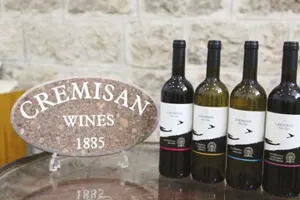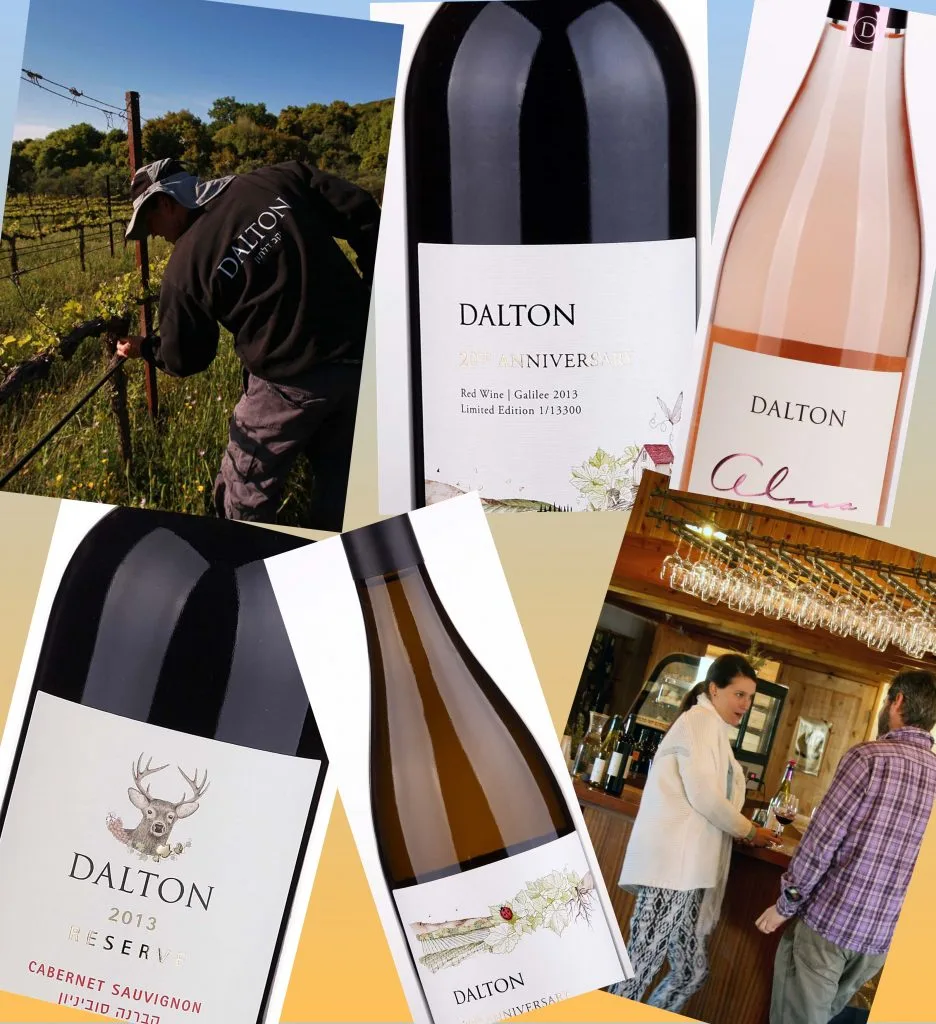It may be the quality red wines which receive all the plaudits. These are arguably the wines that Israel makes best and the critics love to write about them. Thankfully white wines are making something of a comeback. Wine lovers are realizing they are more versatile with food and are more rewarding in our climate. We are making some very good white wines these days. However, people often forget that Israel is also getting a name for producing wonderful dessert wines.
Unfortunately most Israelis are damaged by a lifelong association with Kiddush wine for Friday Nights, Festivals and Seders. So they associate sweet wine with simply the worst wine, often tasting like sugared water and with religious ritual. Therefore the very word ‘sweet’ has connotations of a cheap and nasty. It is something which is to be avoided, at all costs.
What they forget is that some of the world’s most sought after and expensive wines are sweet, pudding wines. An Eiswein or Trockenbeerenauslese from Germany, Icewine from Canada, Sauternes from Bordeaux or Tokay from Hungary are sweet, are some of the most sublime wines you can taste. There is a world of difference between a dessert wine and a Kiddush wine.
Dessert wines are made in a number of ways. Either by using late harvested overripe grapes, by allowing what is called noble rot, freezing the grapes, or drying them on mats as was done in ancient times. Likewise fortified wines like Port or Sherry were made by adding alcohol either during or after fermentation.
What a tragedy if a wine lover never experiences them, just because they associate the word sweet with Manischevitz, Palwin, King David and Konditon!
Israel in wine terms is part of the Eastern Mediterranean. That is our wine growing region. Some of our neighbours, Greece and Cyprus in particular, are famous as being home to some of the world’s most original dessert wines. Commandaria, from 14 villages on the southern slopes of the Troodos Mountains in Cyprus, is the world’s most historic wine, dating back to the Crusades. Greek wines such as Mavrodaphne from the northwest Peloponnese, Vinsantos from the Assyrtiko grape grown in the volcanic island of Santorini or Muscats from the island of Samos, are some of the world’s best dessert wines. The Etko Centurion Commandaria, Achaia Clauss Mavrodaphne, Argyros Vinsanto and Samos Muscat are world class dessert wines. When you are on holiday seek them out, and bring back bottles for your friends.
The first great Israeli dessert wine that changed many views in Israel, was the Yarden Sauvignon Blanc Late Harvest 1988. The Sauvignon Blanc from the Ortal vineyard was found to have botrytis (what is known as Noble Rot) and the Golan Heights Winery made what may be the best ever dessert wine made in Israel. It was certainly a wonderful wine, and totally unique, because it was never replicated. Those privileged to taste the Yarden Sauvignon Blanc Late Harvest will never forget it. It shocked the cynics, (including the new Israeli wine expert), into realizing that sweet could be ok.
However it is only in the last ten years that Israeli dessert wines have consistently gained international ratings at the very highest level. The finest of these are made from the aromatic, difficult to pronounce Gewurztraminer grape, which is often shortened to the easier ‘Gewurz’.
The Yarden HeightsWine produced by the Golan Heights Winery Sha’al Single Vineyard Gewurztraminer from Carmel Winery, are both made from Gewurztraminer grapes on the volcani plateau of the Golan Heights. Both have been regularly recognized internationally as being world class dessert wines, winning awards and receiving high scores at the very highest level.
The HeightsWine is a play on the words ‘Icewine’ and ‘Golan Heights’. It is produced from Gewurztraminer grapes, which are then frozen at the winery. The result is a rich, honeyed and luscious wine. Carmel Sha’al Gewurztraminer is produced from a single vineyard on the Golan Heights, where the grapes are late harvested. The result of the freezing and late harvesting is that the flavors are wonderfully concentrated and unctuous. Arguably the Sha’al Gewurztraminer is more delicate and refreshing, whilst the HeightsWine is richer and more complex. The Carmel wine has not been made for a couple of years, but there is still some around if you can find it.
Regional variety is provided by the Binyamina Reserve Late Harvest Cluster Select Gewurztraminer. A bit of a mouthful, but they go to the trouble of picking selected clusters of the grapes which are grown in the Upper Galilee. Then is the Tzora Vineyards Or, rare, expensive and wonderful dessert wine, again made from Gewurztraminer, grown in the Shoresh vineyard in the hills that rise towards Jerusalem. The Or has a beautiful balance of fruit and acidity, and the very high acidity prevents the wine from appearing to be too sweet or cloying.
All these are outstanding examples of their art, but there are other dessert wines in Israel covering every price point. The more regular dessert wines are usually made from Muscat. The Muscat of Alexandria grape variety is indigenous to the Eastern Mediterranean. It is a large grape, more commonly known as a table grape for food. However it has been in our area for a long time and may even go back to Biblical times. Some excellent grapey dessert wines are made from Muscat. White or Johannisberg Riesling is rarer in Israel. This is not Emerald Riesling, but the genuine Riesling, famous in Germany and Alsace. The two wineries that make quality dessert wines from this variety are Teperberg and Vitkin.
At Rosh Hashanah, a dessert wine should be served ice cold, even from the freezer (but be sure not to forget it). A regular white wine glass is perfect, just pour in less wine. Avoid the mini liqueur glasses, sherry schooners or mini flute glasses that are so often offered by restaurants in Israel. They will do nothing, apart from contriving to ensure that your precious dessert wine does not show itself at its best.
Remember dessert wines normally come in smaller format bottles, in sizes of half bottles (375 ml) or half liter (500 ml.) They are normally well priced and people tend to drink less because they are sweet. They are wine to sip and savor rather than to quaff.
Your dessert wine will be perfect for the Kiddush. It will then be suitable to accompany the sweet dishes served including the sweet Challah dipped in honey, the traditional apple and honey, dates and sweet carrot dishes which begin the festive meal. They will even go well with the Gefilte Fish, matching the sweetness and yet toning down the heat of the horseradish. Funnily enough, those gourmet kings known as the French, often even start off a meal with an ice cold Sauternes as the aperitif. So that is my recommendation for Rosh Hashanah. Drink sweet!
It is then possible to revert to dry wines for the main course and return to the dessert wine with the puddings. For dry wines I recommend you buy smart. Look in the supermarkets and the larger wine shops. There are some great promotions and good deals to be had. I always believe that the three for 100 shekel category is the best value one. Choose any from Tabor Har, Carmel Private Collection, Golan Height Winery Hermon, or Recanati Yasmin and you will not be disappointed with the wines.
Of course, Rosh Hashanah is not any old Festival, it is the New Year. Therefore it is worth selecting a quality sweet wine to honor the occasion, instead of the lesser expensive, poorer quality alternatives. So quite apart from the fact that dessert wines are ideal for the Rosh Hashanah meal, it is a good time to appreciate Israel’s excellent dessert wines.
A sweet wine for a sweet year. Shanah Tova!




